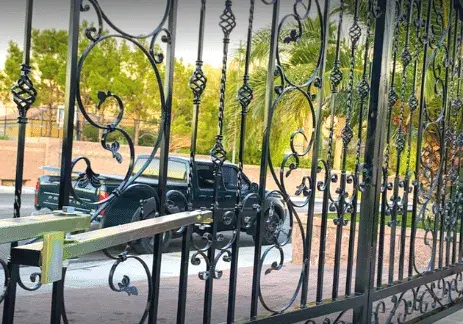
The initial perception that visitors have of a residence is often shaped by the appearance of its exterior, the driveway gate serving as a key component in this impression. In order to maintain a pristine image, it is crucial to promptly address any issues related to the functionality or aesthetics of these gates.
Understanding common problems and solutions for driveway gates is essential not only for maintaining curb appeal but also for ensuring their longevity and performance.
Maintenance plays an indispensable role in prolonging the lifespan of driveway gates, necessitating diligent attention and understanding from homeowners. By implementing regular maintenance routines, one can circumvent potential pitfalls that may lead to larger issues down the road.
This article aims to provide an extensive understanding of common gate problems and their solutions while also offering insights into effective maintenance practices to ensure your gate continues to enhance your property's aesthetic appeal while performing at optimal levels.
Understanding Common Gate Problems and Solutions
Investigating the common issues encountered with driveway gates and their corresponding solutions provides crucial insights that can help in maintaining the functionality and aesthetic appeal of one's property.
The most prevalent problems are often related to structural damage, mechanical malfunctions, or weather-induced deterioration.
Structural damage may take the form of bent or broken gate parts, typically caused by physical impact such as vehicle collisions or vandalism.
Mechanical malfunctions, on the other hand, usually involve faulty motors or control units in automatic gates; these issues might be due to electrical faults or wear-and-tear over time.
Lastly, weather-induced issues include rusting of metal components or warping of wooden elements due to moisture exposure.
In addressing these concerns, various strategies could be employed depending on the severity and nature of the problem at hand.
Minor structural damages might be resolved through simple repair techniques like straightening bent parts or welding broken pieces together; however, severe damages may necessitate full replacement of affected components.
For mechanical issues plaguing automated gates, professional repair services should ideally be sought given the intricacy and potential hazards involved with handling electrical systems.
As for weather-related problems, preventive measures are highly recommended such as applying rust-resistant coatings for metallic gates and sealants for wooden ones — actions which not only restore gate performance but also enhance its durability against future adversities.
Maintenance Tips for Prolonged Gate Lifespan
Ensuring the longevity of a residential or commercial entrance barrier requires routine maintenance and proactive care.
High-quality gates, regardless of their type (swing, slide, or lift), are typically robust and durable; however, regular upkeep can extend their lifespan significantly. It becomes crucial for property owners to understand the value of consistent gate maintenance in preserving not just its aesthetic appeal but also its functionality and safety features.
Among essential yet straightforward gate maintenance tasks include:
- Regularly inspecting the gate for any visible signs of wear and tear.
- Ensuring that all moving parts are adequately lubricated to reduce friction and prevent premature deterioration.
- Cleaning the gate periodically to remove dirt, dust, rust, or any other corrosive elements.
- Checking whether all electronic components are functioning correctly in case of automated gates.
- Scheduling professional service checks at least once a year for comprehensive diagnostics and preventive repairs.
Implementing these measures will markedly improve the efficiency of driveway gates while enhancing their resilience against adverse weather conditions and daily usage strain. Moreover, it fosters an environment where both aesthetic appeal and functional excellence coexist - catering to those who value belongingness through unified exterior design without compromising on security requirements.
https://www.sfbay-automaticgates.com/driveway-gates/reviving-your-homes-grand-entrance-driveway-gate-repairs/


 The initial perception that visitors have of a residence is often shaped by the appearance of its exterior, the driveway gate serving as a key component in this impression. In order to maintain a pristine image, it is crucial to promptly address any issues related to the functionality or aesthetics of these gates.
Understanding common problems and solutions for driveway gates is essential not only for maintaining curb appeal but also for ensuring their longevity and performance.
Maintenance plays an indispensable role in prolonging the lifespan of driveway gates, necessitating diligent attention and understanding from homeowners. By implementing regular maintenance routines, one can circumvent potential pitfalls that may lead to larger issues down the road.
This article aims to provide an extensive understanding of common gate problems and their solutions while also offering insights into effective maintenance practices to ensure your gate continues to enhance your property's aesthetic appeal while performing at optimal levels.
The initial perception that visitors have of a residence is often shaped by the appearance of its exterior, the driveway gate serving as a key component in this impression. In order to maintain a pristine image, it is crucial to promptly address any issues related to the functionality or aesthetics of these gates.
Understanding common problems and solutions for driveway gates is essential not only for maintaining curb appeal but also for ensuring their longevity and performance.
Maintenance plays an indispensable role in prolonging the lifespan of driveway gates, necessitating diligent attention and understanding from homeowners. By implementing regular maintenance routines, one can circumvent potential pitfalls that may lead to larger issues down the road.
This article aims to provide an extensive understanding of common gate problems and their solutions while also offering insights into effective maintenance practices to ensure your gate continues to enhance your property's aesthetic appeal while performing at optimal levels.


